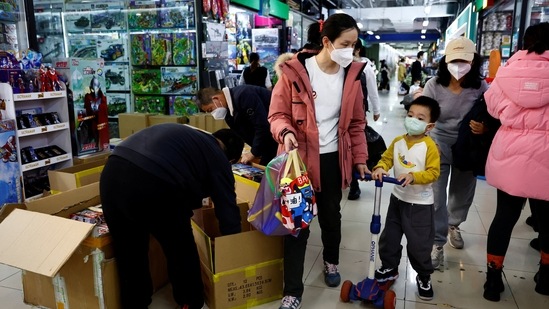China's population dips 1st time since 1960s, India likely to overtake soon
The latest official data showed that China's population stood at around 1,411,750,000 (1.4 billion) at the end of 2022, which is a drop of 850,000 from the end of the previous year.
The world's most populous country, China, saw its population dwindle last year for the first time in six decades, the National Bureau of Statistics (NBS) revealed on Tuesday.

According to the official data, the Asian nation's population stood at around 1,411,750,000 (1.4 billion) at the end of 2022, which is a dip of 850,000 from the end of the preceding year.
The statistics is likely to mark the beginning of a decline of citizen numbers in China with possibilities of major impact on the country's economy - which also slumped after it grew only 3 per cent in 2022, one of weakest in 40 years, official data showed.
The latest report strengthens experts' views that India - the current second most populous nation in the world - is going to overtake China at the top spot.
According to a report by Reuters, online searches for baby strollers on China's Baidu search engine decreased 17 per cent in 2022 and are down 41 per cent since 2018. Furthermore, baby bottles' searches are down by over a third since 2018. In India, however, the reverse is occurring with Google Trends showing a 15 per cent year-on-year jump in searches for baby bottles in 2022, while the same for cribs saw a nearly five-fold rise.
In China, meanwhile, online Baidu searches for elderly care homes increased eight-fold last year.
Here are the key points of this development:
- The last time China's population dipped was in 1960 when the country grappled with the Great Famine caused by the Mao Zedong agricultural policy known as the Great Leap Forward.
- In 2022, China's birth rate was 6.77 births per 1,000 people, down from a rate of 7.52 births in the previous year and as a result, marked the lowest birth rate on record, the NBS said. The country also logged its highest fatality rate since 1974, recording 7.37 deaths per 1,000 people as opposed to a rate of 7.18 deaths in 2021.
- The United Nations earlier had predicted that the world's populous country will start to see its citizen numbers declining this year onwards, Reuters reported. The National Health Commission said that China will “enter a stage of negative growth in the '14th Five-Year Plan' period” referring to the time span between 2021 and 2025, AFP reported. UN experts further stated that China's population will shrink by 109 million by 2050, more than triple the drop of their previous prediction in 2019.
- Much of the demographic decline has been attributed to China's stringent ‘one-child policy’ that was imposed in the 1980s due to fear of overpopulation and was only relaxed in 2016 and couples have been allowed to have three children from 2021.
- The ‘zero-Covid’ policy that was in place for three years and was lifted last year worsened the damage as citizens were forced to stay at home with bleak inflow of money, Reuters reported citing population experts.
- Among other reasons, many - as reported by AFP - have pointed to the sky-high living costs in China for the demographic downward trend. Besides, the demand for higher education has contributed. Xiujian Peng, a researcher at Australia's University of Victoria, told AFP that Chinese people are also “getting used” to a small family owing to the decades-long ‘one-child’ policy.
- Local governments in the Asian country rolled out several measures to address the lowering birth rate, even as the population ages. These include tax deductions, longer maternity leave and housing subsidies. For example, the Chinese southern city of Shenzhen now offers a birth bonus and allowances paid until the child is three years old. The eastern city of Jinan has begun paying a monthly stipend of 600 yuan to couples who have a second child since January 1.
(With inputs from AFP and Reuters)




